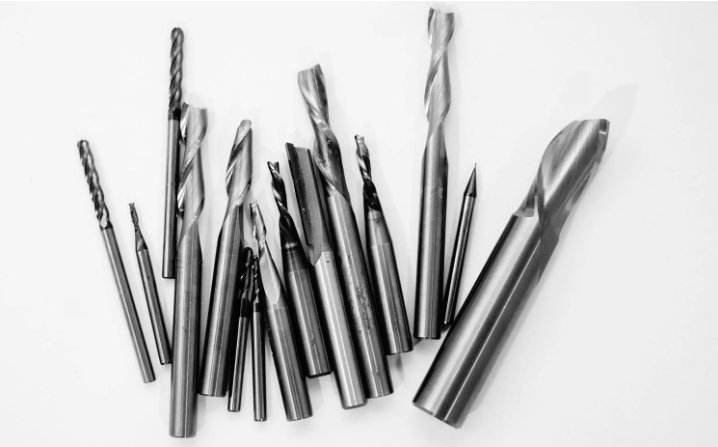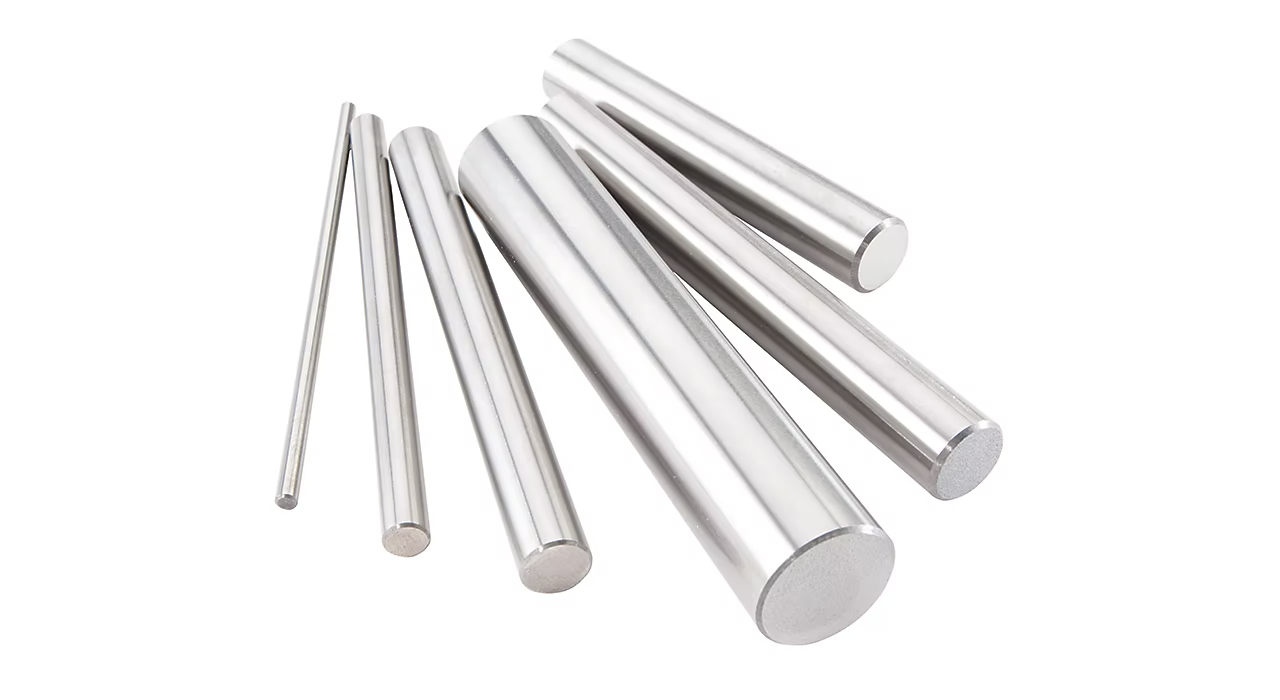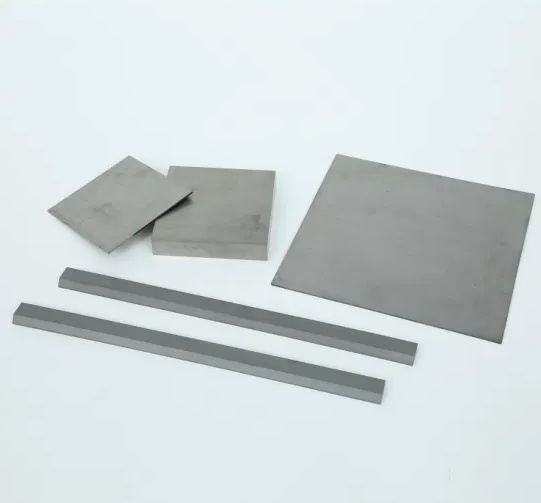Carbure cémenté fraises en bout constituent la pierre angulaire de l'usinage moderne, offrant une précision, une durabilité et une polyvalence inégalées dans le façonnage d'une vaste gamme de matériaux. Ces outils, qui se distinguent par des arêtes de coupe composées de particules microscopiques de carbure de tungstène liées à une matrice métallique, surpassent leurs prédécesseurs en acier rapide en termes de dureté, de résistance à l'usure et de tolérance à la chaleur. Cette exploration approfondie porte sur les subtilités des fraises en carbure cémenté, notamment leur construction, leurs applications, leurs avantages et les facteurs cruciaux pour obtenir des résultats d'usinage optimaux.

L'intérieur de l'outil : Déconstruction de l'anatomie d'une fraise en carbure cémenté
Composants et configurations : Un examen plus approfondi
- Bords de coupe (cannelures) : L'essence même de la fraise en bout, avec de multiples arêtes de coupe méticuleusement rectifiées selon des géométries précises pour un enlèvement de matière efficace. Les configurations des goujures varient en fonction de l'application, comprenant des géométries droites, hélicoïdales ou plus complexes adaptées à des tâches spécialisées.
- Tige : Ce composant cylindrique assure la stabilité et un positionnement précis pendant l'opération en étant solidement maintenu dans le porte-outil de la fraiseuse. Les types de queues les plus courants sont les queues Weldon, Whistle Notch ou droites, chacune offrant des mécanismes de serrage distincts.
- Substrat : Si le carbure cémenté règne en maître pour les arêtes de coupe en raison de sa dureté et de sa résistance à l'usure exceptionnelles, le corps de l'outil (substrat) peut être fabriqué à partir de divers matériaux :
- Carbure massif : Offre le summum de la rigidité et de la performance pour les applications exigeantes, bien qu'à un coût plus élevé.
- HSS à pointe carbure : Combine stratégiquement un corps en acier rapide (HSS) économique avec une pointe en carbure cémenté brasé, établissant un équilibre entre la performance et le prix.
- Revêtements : Pour améliorer encore leurs capacités, les fraises en carbure cémenté sont souvent soumises à des processus de revêtement spécialisés utilisant des techniques de dépôt avancées. Ces revêtements agissent comme des boucliers protecteurs, augmentant la durée de vie de l'outil, améliorant les finitions de surface et permettant des vitesses de coupe plus élevées. Les options de revêtement les plus courantes sont les suivantes
- Nitrure de titane (TiN) : Reconnaissable instantanément à sa teinte dorée distinctive, le TiN améliore la dureté et la résistance à l'usure.
- Carbonitrure de titane (TiCN) : Surpassant le TiN en termes de dureté et de résistance à l'usure, le TiCN présente souvent un aspect gris plus foncé ou noir.
- Nitrure d'aluminium et de titane (AlTiN) : Ce revêtement excelle dans les environnements à haute température, ce qui en fait le choix idéal pour l'usinage à grande vitesse et pour s'attaquer aux matériaux difficiles à couper.
- Carbone semblable à un diamant (DLC) : Comme son nom l'indique, le DLC offre une friction exceptionnellement faible et une résistance à l'usure impressionnante, ce qui s'avère inestimable lors de l'usinage de matériaux abrasifs tels que les composites.
Un monde d'options : Naviguer parmi les types et les applications des fraises en carbure cémenté
De l'ébauche à la finition : le choix de l'outil adéquat
| Type de fraise | Caractéristiques principales | Applications idéales |
|---|---|---|
| Fraise à bout carré | - Extrémité de coupe plate avec coins à 90 degrés<br> - Conçu pour créer des épaules, des fentes et des poches carrées | Fraisage à usage général, création de fentes et de poches |
| Broyeur à billes | - Extrémité de coupe hémisphérique<br> - Idéal pour produire des bords arrondis, des contours et des formes complexes en 3D | Fabrication de moules, fonçage de matrices, contournage, gravure |
| Fraise à rayon d'angle | - Coins arrondis avec un rayon spécifique<br> - Combine les attributs des fraises carrées et des fraises à billes | Chanfreiner, arrondir les angles, estomper les surfaces, créer des congés |
| Fraise à ébaucher | - Equipé de gorges moins nombreuses et plus profondes pour un enlèvement de matière agressif<br> - Optimisé pour des taux d'enlèvement de métal élevés et un enlèvement de matière rapide | Opérations d'ébauche où l'enlèvement rapide de grandes quantités de matériau est essentiel |
| Fraise de finition | - Caractérisé par des cannelures plus nombreuses et moins profondes pour obtenir des finitions de surface fines.<br> - Conçue pour les coupes légères et les tolérances serrées | Opérations de finition où les surfaces lisses et les dimensions précises sont primordiales |
| Fraise à denture hélicoïdale | - L'angle d'hélice est agressif pour une meilleure évacuation des copeaux.<br> - Bien adapté aux coupes profondes et aux matériaux difficiles | Usinage à grande vitesse, création de poches profondes, matériaux difficiles à usiner |
| Foreuse | - Un outil polyvalent combinant des capacités de perçage et de fraisage<br> - Elle comporte une arête de coupe centrale pour le perçage de trous et des arêtes de coupe périphériques pour le fraisage. | Rationalisation des opérations par le perçage et le profilage avec un seul outil, ce qui réduit les changements d'outils |
Dynamique du marché : L'essor irrésistible des outils de coupe en carbure cémenté
Le marché mondial des fraises en carbure cémenté connaît une croissance remarquable, alimentée par plusieurs facteurs clés :
- La révolution de l'automatisation : L'adoption généralisée de l'usinage CNC et de l'automatisation exige des outils de coupe très performants, capables de résister aux rigueurs d'environnements de production exigeants.
- Avancées aérospatiales et médicales : Les secteurs en plein essor de l'aérospatiale et de la médecine dépendent fortement de l'usinage de précision de matériaux légers et très résistants tels que le titane, l'inconel et les alliages cobalt-chrome, matériaux dans lesquels le carbure cémenté excelle.
- Tendance à la miniaturisation : Dans tous les secteurs, la demande de composants plus petits et plus complexes dans l'électronique, les appareils médicaux et d'autres secteurs nécessite des capacités de micro-usinage, un domaine où le carbure cémenté règne en maître.
TRUER : La référence en matière de performance des fraises en carbure cémenté
Une analyse comparative : TRUER vs. les leaders de l'industrie
| Fournisseur | Localisation | Fourchette de prix (par pièce, approximatif) | Spécialités |
|---|---|---|---|
| TRUER | ÉTATS-UNIS | $15 – $160+ | Une qualité sans compromis, des conceptions spécifiques aux applications, des prix compétitifs, un support client exceptionnel |
| Sandvik Coromant | Suède | $20 – $200+ | Nuances de carbure haute performance, conception d'outils innovants, priorité au développement durable |
| Kennametal | ÉTATS-UNIS | $18 – $180+ | Gamme de produits étendue, options de revêtement variées, solutions spécifiques à l'industrie |
| Iscar | Israël | $16 – $170+ | Géométries avancées pour une évacuation optimisée des copeaux, solutions d'usinage à haut rendement |
Remarque : Les prix des fraises en carbure cémenté sont influencés par une multitude de facteurs, notamment la taille de la fraise, le type, le matériau, le revêtement, la quantité commandée, etc. Il est toujours recommandé de demander des devis à plusieurs fournisseurs à des fins de comparaison.
Peser les avantages et les limites : Prendre des décisions éclairées en matière d'usinage
L'avantage du carbure cémenté : Avantages et inconvénients
| Fonctionnalité | Avantages | Limites |
|---|---|---|
| Dureté et résistance à l'usure | - Dureté exceptionnelle permettant l'usinage des matériaux les plus durs<br> - La résistance élevée à l'usure se traduit par une durée de vie prolongée de l'outil, ce qui permet de réduire considérablement les coûts d'outillage au fil du temps. | - Ils peuvent être fragiles, ce qui les rend susceptibles de s'écailler ou de se briser en cas d'impact important ou d'utilisation inappropriée. |
| Vitesse de coupe et vitesses d'avance | - Permet des vitesses de coupe nettement plus élevées que les outils HSS<br> - L'augmentation des taux d'enlèvement de matière se traduit par une amélioration de la productivité et une réduction des temps de cycle. | - Nécessite des installations et des machines rigides afin de minimiser les vibrations et d'éviter d'endommager les outils. |
| Précision et finition de la surface | - Capable de réaliser des tolérances exceptionnellement serrées et des finitions de surface fines<br> - Réduit ou élimine souvent le besoin d'opérations de finition secondaires, ce qui permet d'économiser du temps et de l'argent. | - Le coût initial peut être plus élevé que celui des outils en acier rapide, mais la durée de vie prolongée et les performances supérieures compensent souvent cet investissement initial. |
Au-delà de la pointe : Facteurs influençant la performance des fraises en carbure cémenté
Optimiser vos opérations d'usinage : Points clés à prendre en compte
- Compatibilité des matériaux : La sélection de la nuance de carbure, du revêtement et de la géométrie appropriés en fonction du matériau spécifique à usiner est primordiale pour maximiser la durée de vie de l'outil, atteindre les performances de coupe souhaitées et obtenir l'état de surface désiré.
- Paramètres de coupe : L'optimisation de la vitesse de coupe, de l'avance et de la profondeur de coupe, en tenant compte des propriétés de l'outil et du matériau, est essentielle pour un usinage efficace et performant. Consultez les tableaux de données de coupe fournis par le fabricant ou utilisez un logiciel spécialisé pour effectuer des calculs précis.
- Sélection du liquide de refroidissement : L'application correcte du liquide de refroidissement joue un rôle essentiel dans le contrôle de la chaleur, la lubrification de la zone de coupe et l'évacuation efficace des copeaux. Tous ces facteurs contribuent à prolonger la durée de vie de l'outil et à améliorer les états de surface.
- Rigidité de la machine : Les fraises en carbure cémenté, en particulier les versions en carbure monobloc, fonctionnent de manière optimale sur des machines rigides avec un minimum de vibrations. Cela minimise la déviation ou la rupture de l'outil. Des techniques de serrage appropriées et un entretien méticuleux de la machine sont essentiels à la réussite de l'opération.
Pourquoi choisir TRUER ?
- Un engagement inébranlable en faveur de la qualité : TRUER ne se procure que les meilleurs matériaux en carbure cémenté et met en œuvre des mesures rigoureuses de contrôle de la qualité à chaque étape du processus de fabrication, garantissant que chaque fraise portant le nom de TRUER répond aux normes les plus élevées de l'industrie.
- Expertise spécifique à l'application : Notre équipe d'ingénieurs chevronnés vous offre des conseils d'experts pour vous aider à naviguer dans le processus de sélection et à déterminer la fraise optimale pour vos besoins d'usinage uniques, en tenant compte de la matière, des tolérances requises et des résultats souhaités.
- Capacités de personnalisation : TRUER est spécialisé dans l'élaboration de solutions sur mesure pour répondre aux exigences des applications les plus complexes et les plus spécialisées. Il s'agit notamment d'adapter les géométries, les revêtements et les dimensions à vos spécifications exactes.
- Au service de votre réussite : Chez TRUER, nous ne nous contentons pas de fournir des outils, nous construisons des partenariats durables. Nous fournissons un support exceptionnel et une assistance technique continue pour garantir le bon déroulement de vos opérations d'usinage et l'obtention de résultats optimaux.
Foire aux questions : Répondre à vos questions sur les fraises en carbure cémenté
1. Quels sont les principaux avantages des fraises en carbure cémenté par rapport aux fraises en acier rapide ?
Les fraises en carbure cémenté offrent une dureté, une résistance à l'usure et une résistance à la chaleur nettement supérieures à celles des fraises en acier rapide. Cela se traduit par une durée de vie plus longue de l'outil, des vitesses de coupe plus élevées, des taux d'enlèvement de matière plus importants et la possibilité d'usiner des matériaux plus durs.
2. Comment choisir le bon revêtement pour ma fraise en carbure cémenté ?
Le revêtement idéal dépend de l'application. Le TiN est un revêtement polyvalent pour l'usinage général, le TiCN offre une dureté accrue pour les matériaux abrasifs, l'AlTiN excelle dans les applications à haute température et le DLC est idéal pour l'usinage des composites et d'autres matériaux abrasifs.Vous voulez en savoir plus ? Pour en savoir plus, n'hésitez pas à nous contacter. cliquer.
3. Quelles sont les raisons les plus courantes de la défaillance prématurée d'une fraise ?
Une défaillance prématurée peut survenir en raison de paramètres de coupe inappropriés, d'une application insuffisante de liquide de refroidissement, d'un dépassement excessif de l'outil, d'une mauvaise rigidité de la machine ou d'une tentative d'usinage de matériaux dépassant les capacités de la fraise.
4. Puis-je réaffûter mes fraises en carbure cémenté ?
Oui, les fraises en carbure cémenté peuvent généralement être réaffûtées plusieurs fois, ce qui prolonge leur durée de vie et réduit les coûts d'outillage. Toutefois, il est essentiel de faire appel à un service de réaffûtage qualifié pour garantir le maintien de la géométrie et des performances de l'outil.
5. Comment TRUER assure-t-elle la qualité et la constance de ses fraises en carbure cémenté ?
TRUER s'engage à fournir des outils de la plus haute qualité. Nous nous procurons des matériaux en carbure de première qualité, mettons en œuvre des mesures rigoureuses de contrôle de la qualité tout au long du processus de fabrication et utilisons des techniques d'inspection avancées pour nous assurer que chaque fraise répond à nos normes rigoureuses.



